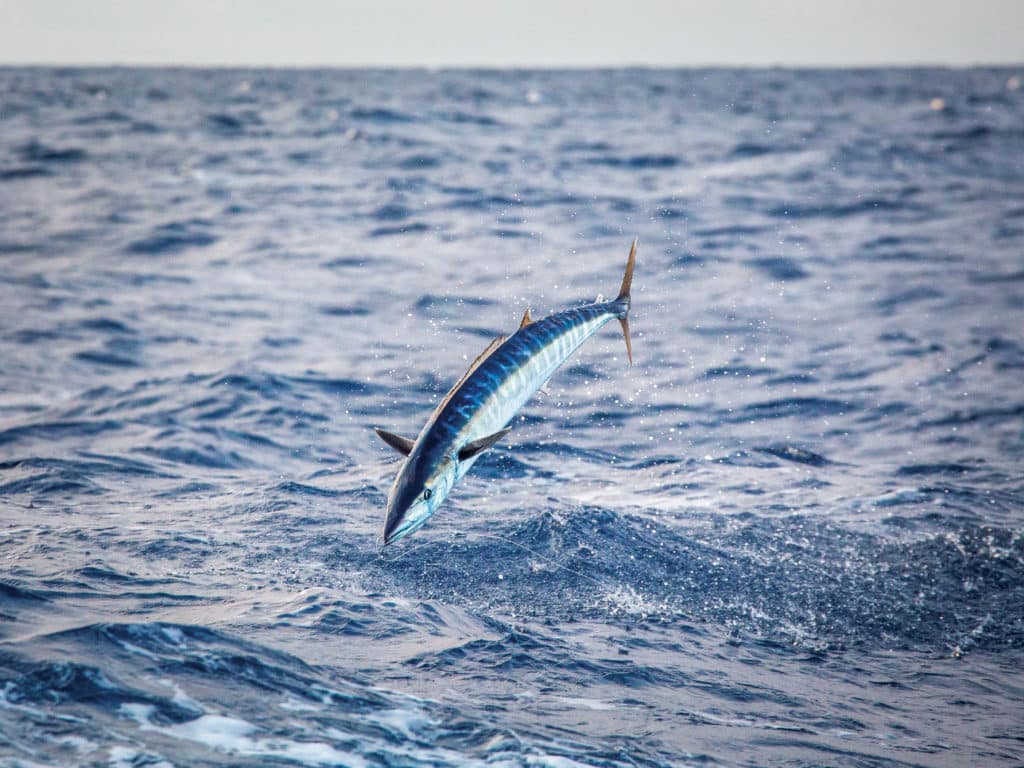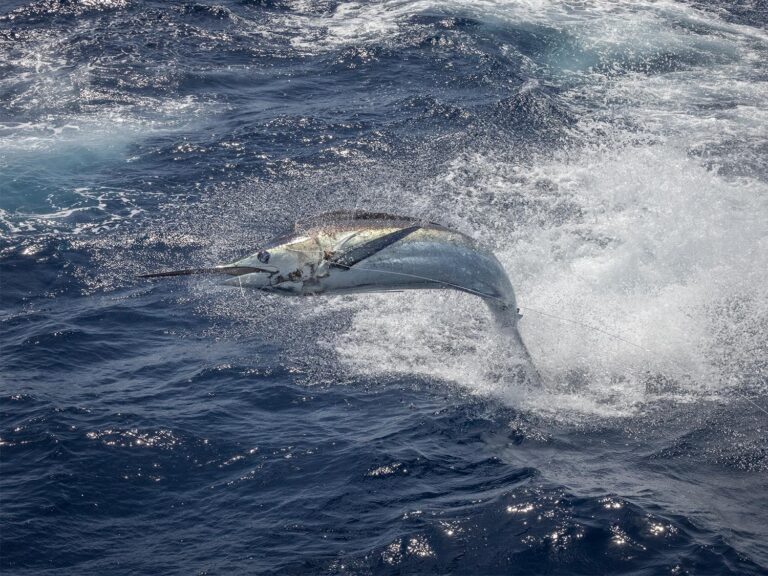
We can learn a lot from commercial fishermen when it comes to the quality of our gamefish. They unequivocally know that every single fish that goes into the fish box needs to come out looking just as good as it went in. A fish brought to market with obvious discoloration, cloudy eyes, or that looks as if it has taken a trip through the rinse-and-spin cycle in your washing machine will immediately be rejected by the buyer, destroying all hopes of selling the fish, and putting the kibosh on a hard day’s work.
For recreational fishermen, the same rings true. Although we might not be toting our catch to the market, we are eating it ourselves or gifting it to friends, so by applying the same concepts and care that commercial fishermen do to guarantee their fish is as fresh as possible, we benefit too. By following a few simple practices, you get high-quality, professional results—and who doesn’t love a fresh-fish supper?
Get the Gaff!
Before you can even begin to think about how you’re going prepare your fresh catch of the day, you have to get it in the boat. Sometimes that’s easier said than done, and most people call dibs on the gaff much like they call “shotgun” to ride in the front passenger seat. But anyone who has even a little experience using a gaff knows that it’s sometimes the most stressful part of fishing. Depending on which species is on the other end of the line, the gaffer can be humbled very quickly by the gaffee.
Mahi will jump and go crazy next to the boat; wahoo will zip under the boat if given half a chance, threatening to cut themselves off; and tuna will dart around enough to offer an extremely wily target, all in an effort to give you the slip.
Watch: A Spanish mackerel is one of the world’s top marlin baits. Here’s how to rig one.
When the fish is 15 to 20 feet away, you’ll want to make sure you’re ready for business. Gaffing a gamefish isn’t about hitting them hard, but rather hitting them in the right spot. Always try to aim for the head—or at least above the pec fin—so you have solid placement and good control of the fish.
As soon as you make the shot, in one smooth motion you should lift the fish over the gunwale and onto the deck, or preferably, directly into the fish box. When gaffing toothy critters such as wahoo, take extra care not to hit anyone as it comes over the rail. If you have the misfortune of gaffing a fish in its midsection, the fish will be hard to control and the meat in that area will be ruined.
“Gaffing a gamefish isn’t about hitting them hard, but rather hitting them in the right spot.”
The Ice Bath
Sure, putting your fish in the cooler is the easiest part of your day, but are you doing it correctly? Most people will fill their coolers full of ice, and as they catch fish, they will throw them right on top. The problem with that is only the side of the fish lying on the ice will start to cool, while the other half stays warm—above the safe temperature that properly preserves raw fish.
According to the US Food and Drug Administration, bacteria thrive in temperatures between 40 and 120 degrees Fahrenheit, so it’s recommended to keep raw fish below 40 degrees. Ideally, as soon as you boat your fish—and finish taking your Instagram pics—it should go directly into an ice slurry or brine: a combination of ice and clean salt water. A fish that is properly brined will stay at temperatures below 35 degrees, thus preserving the meat as well as the color of the fish.
To properly make an ice slurry or brine, simply fill your cooler or fish box three-quarters full of ice, and then top it off with clean salt water until it reaches an even level with the ice. Be careful not to add too much water because it will melt the ice and cause the fish in the cooler to slosh back and forth as the boat rocks, making them lose their normal color and look older than they actually are. When you properly ice a fish, the meat will also firm up, making it much easier to fillet.
Read Next: When (if ever) is it acceptable to kill a marlin? Five pros sound off.
Cut It Up
After a successful day on the water, it’s time to clean, package and make dinner plans for the fish that have been chilling nicely all day. Always begin with a very sharp knife because it makes cleaning the fish quick and easy.
When filleting your fish, make the first cut just behind the gills and pec fin until you hit the spine, then while keeping your knife flat, start cutting along the dorsal side of the fish, working the knife carefully back and forth along the bones until you get to the rib cage. Avoid cutting into the ribcage so the contents of the fish’s stomach do not contaminate the fillet.
Once the fillet is removed, lay it skin side down, and separate the skin from the meat by keeping your knife at a 45-degree angle as close to the skin as possible without cutting through it, working the knife back and forth until the fillet is free. The last step in cleaning the fillet is to remove any bloodline or pin bones. Look for the dark red bloodline running the length of the fillet, and remove it by cutting down each side of it.
It’s also a good practice to keep fresh water off the meat—fresh water will make it mushy. You can place the cut fillets into a bucket of fresh slurry water, which not only keeps the fillets cold, but it also keeps them clean until you are ready to start packaging or preparing your fish for eating.
We spend a lot of time and money to go fishing, and eating what you catch is one of the rewards. It just makes sense to do what you can in order to enjoy your fish at its fullest potential.

Making the Grade
There’s nothing better than fresh, thinly sliced tuna at your favorite sushi bar, but what does it take to have that kind of quality on your dinner table at home? Bleeding out your fish—exhausting the blood from the muscle, eliminating any flowing blood—and icing it right away is the key to achieving beautiful, mild-tasting sashimi-grade meat. There are a couple of ways you can choose to bleed out your catch: Use a knife to make a 1- to 2-inch incision directly behind each pec fin, through the lateral line, where the main arteries are located. Or insert the knife inside the fish’s gill plate, and sever the gills and the heart, which is located at the base of the throat. Both methods work very well, and the end result will be fish that is visually pleasing and flavorful.
PRO TIP: After cutting the arteries, a smaller tuna placed in a bucket of salt water for a few minutes will prevent the blood from clotting, ensuring it’s bled out completely. For larger fish, insert a saltwater hose in the tuna’s mouth or in the cut made behind the pec fin to help flush the blood from the body.







